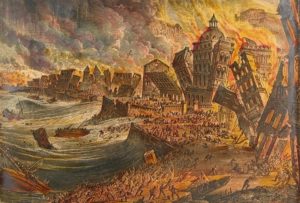In Lisbon’s metro, you can find art under your feet
The construction of the Metropolitana de Lisboa started in August 1955. The initial line consisted of 6,5 kilometers and comprised 11 stations and two-carriage trains. Nowadays there are four Lines (Blue, Green, Yellow, and Red) with a total of 56 stations. It certainly isn’t a punishment to travel in Lisbon’s underground. Some stations will surprise you with their impressive architecture.

The Olaias station was inaugurated in 1998 to serve Expo’98 visitors. Situated between Alameda and Bela Vista the station is part of the Red Line. It is considered one of the most beautiful in the world. The architect Tomás Tavira designed an imposing station with high pillars in industrial style and many colors, both on the platform and throughout the route that passengers take to enter or exit the metro.

The Jardim Zoológico station, situated between Laranjeiras and Praça de Espanha, is part of the Blue Line and one of the first metro stations in the capital. It used to be called Sete Rios after the square under which it is located.
The artistic interventions are by Júlio Resende, who decorated the station with cave paintings referring to animals present in the Lisbon Zoo.

Another pioneering station on the blue line is Parque in the Parque Eduardo VII area and situated between the stations São Sebastião and Pombal. After its inauguration in 1959, the station was completely remodeled in 1994 by Francoise Schein and Frederica Matta, who worked on the theme of the Portuguese Discoveries, using shades of blue painted tiles.

The Campo Grande station integrates two lines, the Yellow and the Green Line. It opened in 1993 and is the first station built on a viaduct. From there one can easily reach the Faculty of Sciences of the University of Lisbon. The interventions on its walls were carried out by Eduardo Nery, who chose Portuguese tiles arranged unconventionally.

At present, the Metropolitano de Lisboa is expanding its network with an extension of the Red Line between São Sebastião and Alcântera and the construction of a new – Violet – Line between Odivelas and Loures.

The two kilometers long circle line connecting the Yellow Line to the Green Line and whose excavation was completed last month will include two new metro stations Estrela (Star) and Santos ( Saints). The names are promising. Let’s see whether these stations will be as beautifully decorated as the ones mentioned above.
Happy Easter Feliz Páscoa (pic Ptnews/Público)
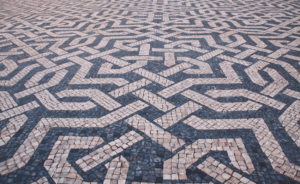


















 A draft legislation thereupon was submitted in July 2017 and discussed in Parliament early this year. Heloísa Apolónia – MP of the Ecological and Green Party (PEV) – explains ‘our proposal is to ban the use of plastic disposables in restaurants and bars and to look for biodegradable substitutes within 3 years.’
A draft legislation thereupon was submitted in July 2017 and discussed in Parliament early this year. Heloísa Apolónia – MP of the Ecological and Green Party (PEV) – explains ‘our proposal is to ban the use of plastic disposables in restaurants and bars and to look for biodegradable substitutes within 3 years.’ António Fonseca, the president of the Association of Bars in the Historic Center of Porto (ABZHP) – that encourages the legalization of the use of alcohol in public places – believes that the plans are irresponsible in the light of the danger glassware can cause in nightlife.
António Fonseca, the president of the Association of Bars in the Historic Center of Porto (ABZHP) – that encourages the legalization of the use of alcohol in public places – believes that the plans are irresponsible in the light of the danger glassware can cause in nightlife.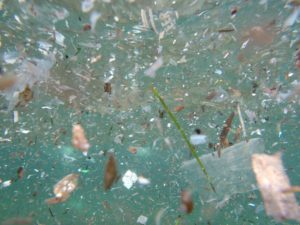

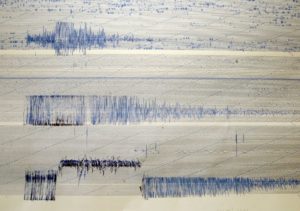 ‘This earthquake can be considered as moderately severe’, says Fernando Carrilho, chief seismologist at the IPMA (Portuguese Institute of the Sea and Atmosphere). ‘People shouldn’t worry too much as the southern part of the country has always been seismic active.’
‘This earthquake can be considered as moderately severe’, says Fernando Carrilho, chief seismologist at the IPMA (Portuguese Institute of the Sea and Atmosphere). ‘People shouldn’t worry too much as the southern part of the country has always been seismic active.’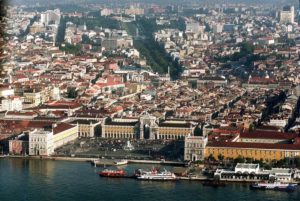 ‘Preventive measures are warranted’, especially in the densely populated areas in the south – like Lisbon and the Algarve – that are most at risk’, says Daniel Oliveira, a civil engineer at the University of Minho. ‘Although a law from 1958 requires earthquake-proof construction, most buildings in the historic capital date from before that time and there is hardly any monitoring of the implementation of the law.’
‘Preventive measures are warranted’, especially in the densely populated areas in the south – like Lisbon and the Algarve – that are most at risk’, says Daniel Oliveira, a civil engineer at the University of Minho. ‘Although a law from 1958 requires earthquake-proof construction, most buildings in the historic capital date from before that time and there is hardly any monitoring of the implementation of the law.’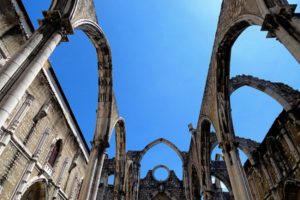 Over the past 500 years, Portugal has suffered four major earthquakes – in 1531, 1755, 1909 and 1969 – with a magnitude of 6 or more on the Richter scale. The biggest and by far most tragic one was in 1755. With a magnitude of 9 on the Richter scale, it developed apocalyptic proportions and completely wiped out the lower part of the capital. This earthquake (terramoto) inspired poets, influenced philosophers, activated prophets and motivated politicians – like the Marquis of Pombal – to a completely new architectural reconstruction of the Baixa, Lisbon’s city center.
Over the past 500 years, Portugal has suffered four major earthquakes – in 1531, 1755, 1909 and 1969 – with a magnitude of 6 or more on the Richter scale. The biggest and by far most tragic one was in 1755. With a magnitude of 9 on the Richter scale, it developed apocalyptic proportions and completely wiped out the lower part of the capital. This earthquake (terramoto) inspired poets, influenced philosophers, activated prophets and motivated politicians – like the Marquis of Pombal – to a completely new architectural reconstruction of the Baixa, Lisbon’s city center.